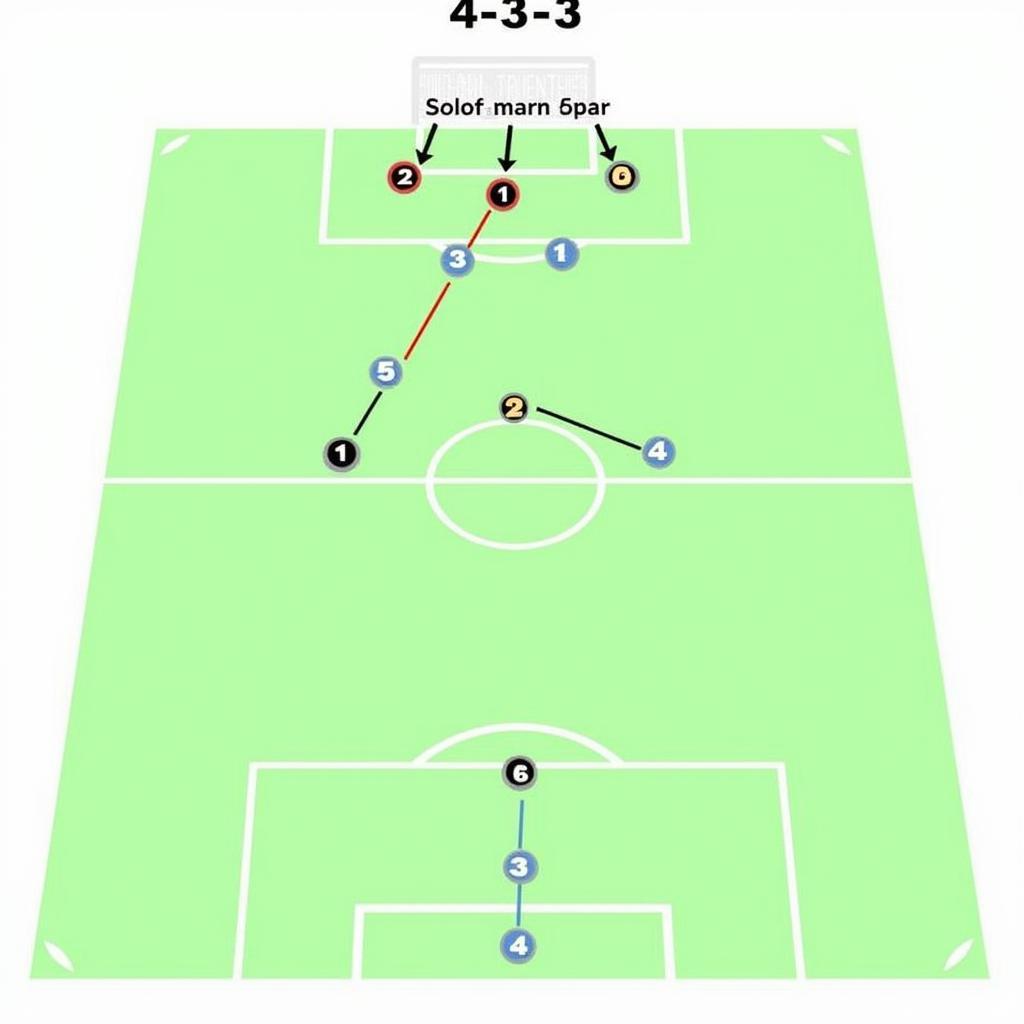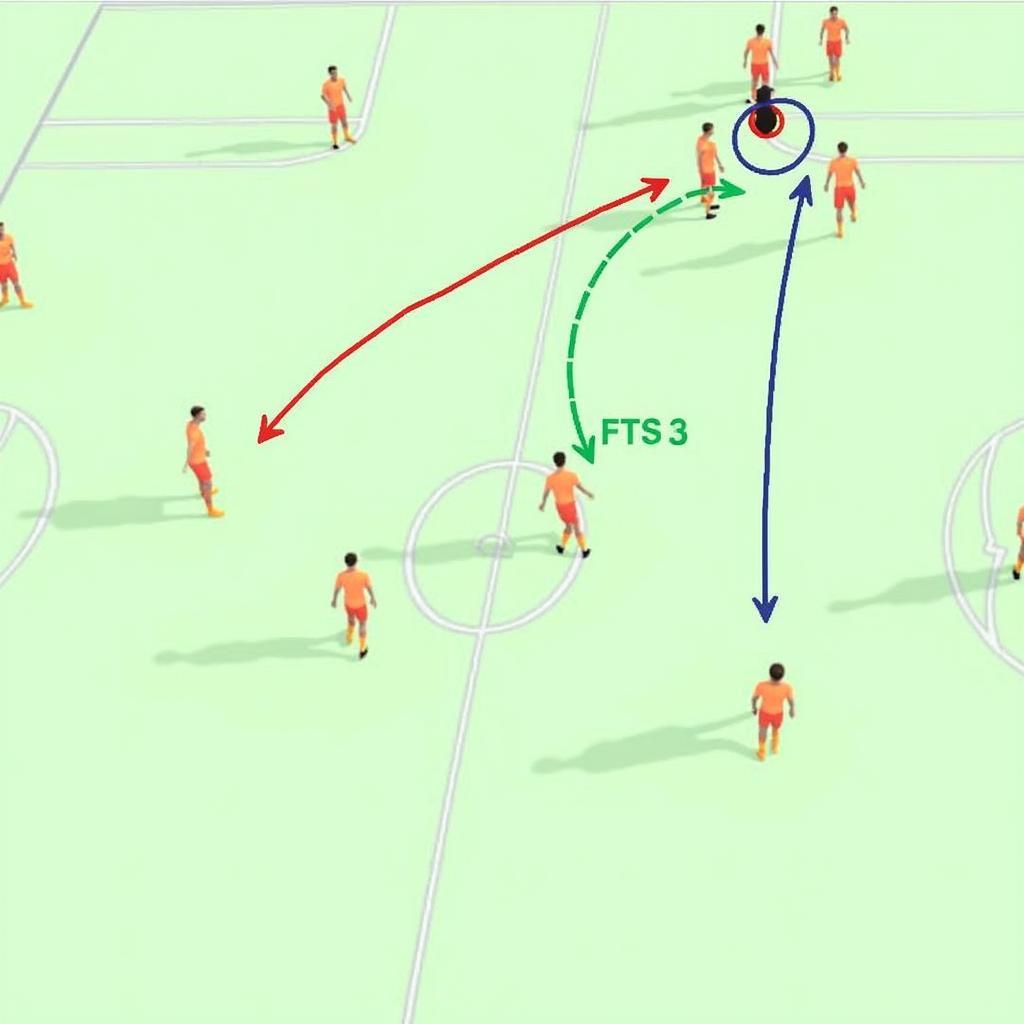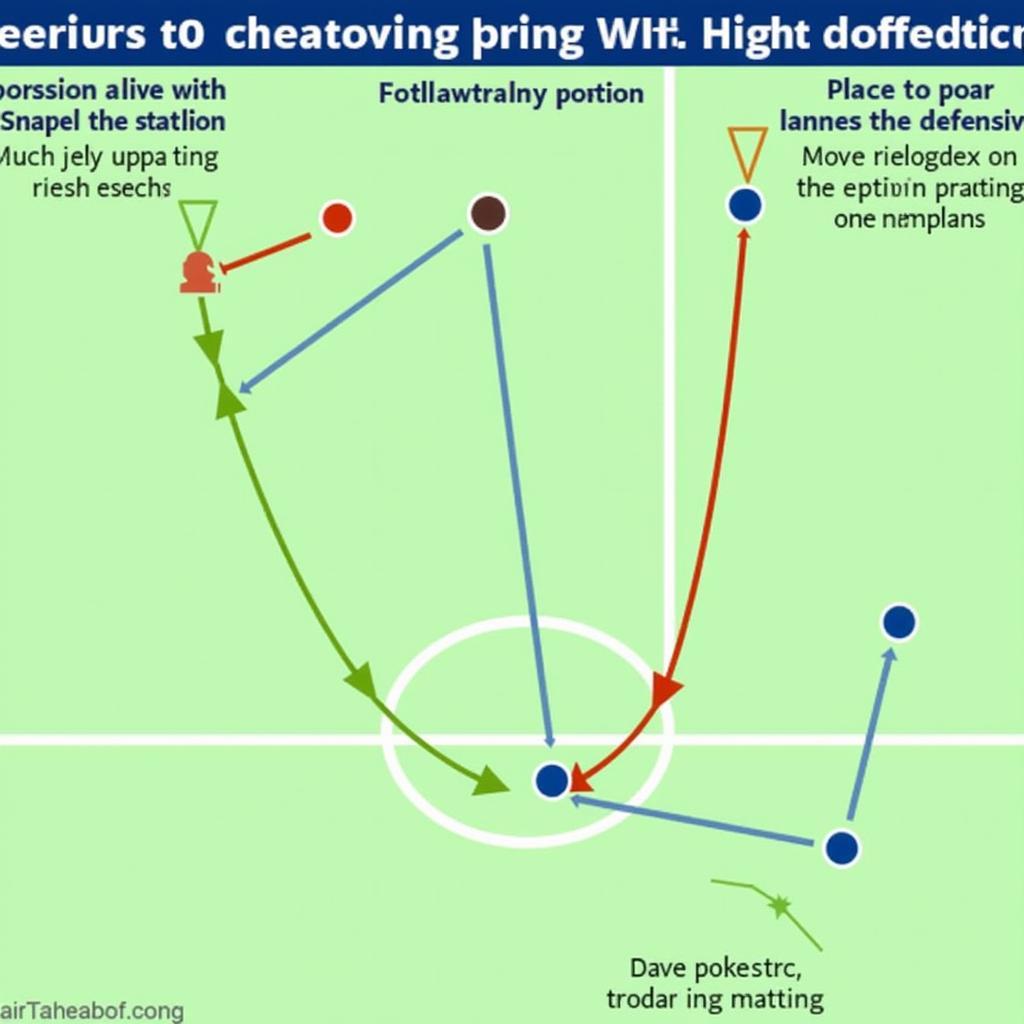Mastering Football Player Positioning: The Key to Success
November 1, 2024Football player positioning is crucial for team success, influencing both offensive and defensive plays. Understanding how to effectively position players on the field can be the difference between winning and losing. This article will delve into the intricacies of player positioning, exploring various formations, roles, and tactical considerations that contribute to a well-structured and effective team.
Are you curious about how to position players in different formations? Do you want to enhance your understanding of player roles and responsibilities on the field? This comprehensive guide explores everything from basic formations to advanced tactical maneuvers, providing insights to elevate your football knowledge. Shortly after this opening, you can learn more about the value of Vietnamese players at giá trị cầu thủ việt nam.
Decoding Football Formations: 4-3-3, 4-4-2, and Beyond
Football formations are the foundation of player positioning. They dictate the initial setup of players on the field and provide a framework for offensive and defensive strategies. Common formations like the 4-3-3, 4-4-2, and 3-5-2 each offer unique advantages and disadvantages, influencing how players are positioned and how they interact with each other. The 4-3-3, favored for its attacking prowess, utilizes wide forwards and a central striker, while the 4-4-2 focuses on a balanced midfield and two strikers. The 3-5-2, with its emphasis on wing-backs and central midfielders, provides defensive solidity and opportunities for quick counter-attacks. Understanding the nuances of each formation is vital for effective player positioning.
Adapting Formations to Different Game Situations
Formations aren’t static; they evolve throughout a match based on the flow of the game. Recognizing when and how to adjust formations is crucial for maintaining control and exploiting opponent weaknesses. For example, switching from a 4-4-2 to a 4-5-1 can strengthen the midfield and provide greater defensive coverage when facing a strong attacking opponent. Similarly, shifting from a 4-3-3 to a 4-2-3-1 can add creativity to the midfield and unlock stubborn defenses.
 4-3-3 Formation in Football: Strategic Player Positioning
4-3-3 Formation in Football: Strategic Player Positioning
The Importance of Player Roles: From Strikers to Defenders
Each player on the field has a specific role to fulfill, and understanding these roles is essential for effective football player positioning. Strikers are tasked with scoring goals, midfielders control the flow of the game and create chances, while defenders protect the goal and initiate attacks from the back. Goalkeepers, the last line of defense, prevent the opposition from scoring. Each role requires different skills and attributes, influencing the ideal positioning of each player on the field. You might also find this article on Vietnamese goal scorers interesting: cầu thủ ghi bàn việt nam.
Maximizing Player Performance Through Positioning
Positioning isn’t just about where a player stands; it’s about creating space, exploiting vulnerabilities, and supporting teammates. A well-positioned striker can create space for midfielders to make runs, while a strategically placed defender can intercept passes and initiate counter-attacks. Effective positioning is dynamic and requires constant awareness of the game’s unfolding events.
 Football Player Roles and Strategic Positioning
Football Player Roles and Strategic Positioning
Tactical Considerations for Optimal Player Positioning
Various tactical considerations influence player positioning, adding complexity and depth to the game. Understanding these factors can significantly enhance a team’s performance.
Creating Space and Exploiting Weaknesses
Creating space for teammates and exploiting opponent weaknesses are key tactical elements. By strategically positioning players, a team can stretch the opposition’s defense, creating gaps for through balls and crosses. Identifying and exploiting weaknesses in the opponent’s formation can lead to high-percentage scoring opportunities. For instance, if an opponent’s full-back is prone to pushing forward, positioning a winger high up the pitch can create opportunities to exploit the space behind them. Here’s an interesting read about player dives, which can sometimes influence positioning: cú giả vờ ngã của cầu thủ.
Maintaining Defensive Shape and Preventing Counter-Attacks
Maintaining a solid defensive shape is crucial for preventing goals and thwarting counter-attacks. Defenders need to be positioned to cover passing lanes and deny the opposition space to operate in dangerous areas. Midfielders play a vital role in shielding the defense, intercepting passes, and tracking back to support the backline. Effective communication and coordination between players are essential for maintaining a cohesive defensive structure.
“Positioning is not just about where you are, but where you can be in the next moment,” says renowned coach, Marcello Lippi. “Anticipation and movement are crucial.”
 Football Tactical Positioning: Defense and Attack
Football Tactical Positioning: Defense and Attack
Conclusion: Football Player Positioning – The Art of Strategy
Mastering football player positioning is an ongoing process that requires a deep understanding of formations, player roles, and tactical considerations. Effective positioning is the bedrock of a successful team, influencing both offensive and defensive plays. By continuously analyzing and adapting their strategies, teams can maximize their performance and achieve their objectives. So, immerse yourself in the world of formations and tactics, and remember, football player positioning is the art of strategy.
FAQ
-
What are the most common football formations?
- Some of the most common formations are 4-3-3, 4-4-2, 3-5-2, and 4-2-3-1.
-
What is the role of a striker in football?
- The striker’s primary role is to score goals.
-
How does player positioning affect defensive play?
- Proper defensive positioning helps prevent goals by covering passing lanes and denying space to the opposition.
-
Why is it important to adapt formations during a game?
- Adapting formations allows teams to react to changing game situations and exploit opponent weaknesses.
-
How can I improve my understanding of football tactics?
- Studying different formations, player roles, and watching professional matches can enhance your tactical understanding.
-
What resources can I use to learn more about football player positioning?
- Books, online articles, coaching courses, and analyzing professional matches are valuable resources.
-
How does player positioning contribute to team success?
- Effective positioning creates scoring opportunities, strengthens defense, and improves overall team performance.
For any questions or assistance, please contact us: Phone: 0396443476, Email: [email protected] Or visit our address: 23 Tháng 3, Đắk Nia, Gia Nghĩa, Đắk Nông, Việt Nam. Our customer service team is available 24/7. You might be interested in reading about Vietnamese player girlfriends: bạn gái cầu thủ việt nam. Or perhaps you’d like to explore something completely different and read about how players’ names can be combined to spell Messi’s name: tên các cầu thủ ghép lại thành tên của messi.